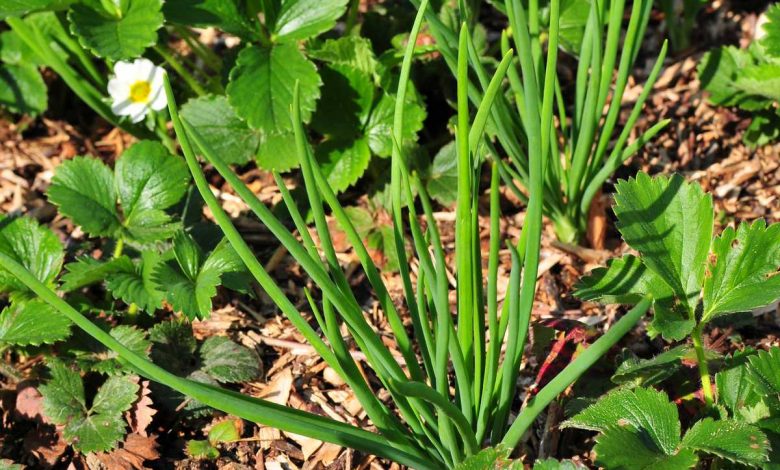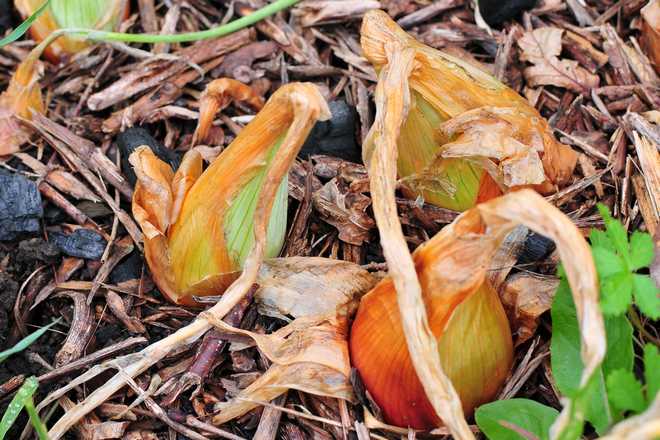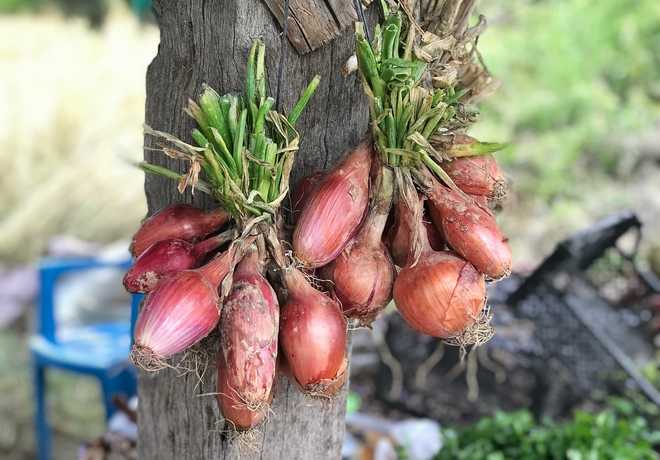
It’s easy to grow bulb, the shallot (Allium cepa aggregatum) is a close relative of the onion. with a finer and sweeter flavor. While some varieties of this condiment plant are planted in autumn, you have to wait until spring to install the most sensitive to excess humidity and cold.
When to plant shallots?
It is in fact the type of shallot that determines its planting period:
- Gray shallots such as Griselle, Grisor , etc. are planted at the end of autumn because they resist the cold well. This early planting saves time on a crop that lasts several months.
- But this early planting is not suitable for pink shallots , such as the Jersey shallot. They have a half-long or long bulb that is more sensitive to cold and humidity. They are rather planted in early spring (February to April),
In both cases, it is important not to buy cloves until the last moment, ideally just before planting. They should be firm to the touch, with no visible rot on the tunic.
If the presence of a small green shoot remains acceptable, do not buy bulbs already started, nor hollow because they would not give anything.
How to plant the shallot?
Whatever its type, plant the shallot in soil that has not received recent manure, otherwise it rots easily.
It is often installed after the ware potato harvest. The fine soil is then very easy to work and still rich enough for a less demanding culture.
The small shallot bulb also fears excess humidity. It is therefore best to install it on a mound 10 to 15 cm high formed with the help of a buffer or a hoe. The water thus flows to the sides and does not stagnate around the bulb.
Here is how to plant:
- Push each bulb with your fingers shallowly, tip facing up.
- Do not cover with soil: the point should just be flush with the surface of the soil.
- Space the bulbs 10 to 20 cm in the same line, 30 cm between the rows. To save space, you can build a mound 40 cm wide, level its top and plant the cloves on the edges of the flat part, in two rows.
- There is no need to water at the end of planting.

Shallots: cultivation and maintenance
The start of the shallot is quite slow. This small bulb is therefore quickly invaded by weeds which can be very invasive, such as chickweed. Weed very regularly between the rows to limit competition and keep a clean cultivation bed.
Watering is really superfluous.
Shallot Diseases
The diseases that affect the shallot are the same as those that affect the onion. They mainly appear when the growing conditions (cold, especially humidity) are poor: Fusarium wilt, Sclerotium, Onion fly and Shallot rust are the 4 main ones.
When to harvest the shallot?
The shallot is uprooted in dry weather from the moment its foliage begins to turn yellow, generally in July or at least August. It is still better to wait until it is completely dry to guarantee long conservation.
Take the fleshy bulbs out of the ground using a spade or a trowel, but be careful not to damage them. Leave them to dry out in the sun for 2 or 3 days on the surface of the ground, before bringing them indoors.
Preservation
Storing shallots is the same as storing garlic or onions.
To keep its qualities for a long time, tie them in bundles or store them in crates, in a cool place, away from humidity and, if possible, in the dark.

Once peeled, the shallot will not keep for more than a few days in the refrigerator in a closed box.
To soften its taste, cut it before rinsing it with clear water and wiping it.
Recommended varieties of shallots
There are many varieties. All are sweet and more or less fragrant.
Longor shallot or half-long Jersey shallot : The long regular bulbs of this good-yielding variety mature quickly. The slightly purple flesh is covered with a copper tunic. It is a variety to be planted in the fall.
Shallot Griselle : Its small arched bulbs, with pinkish white flesh, are protected by a gray, thick and very hard coat. If the yield is a little low and the conservation average (6 to 7 months), these defects are largely compensated by its fine flavor. By far the most popular variety among enthusiasts!
